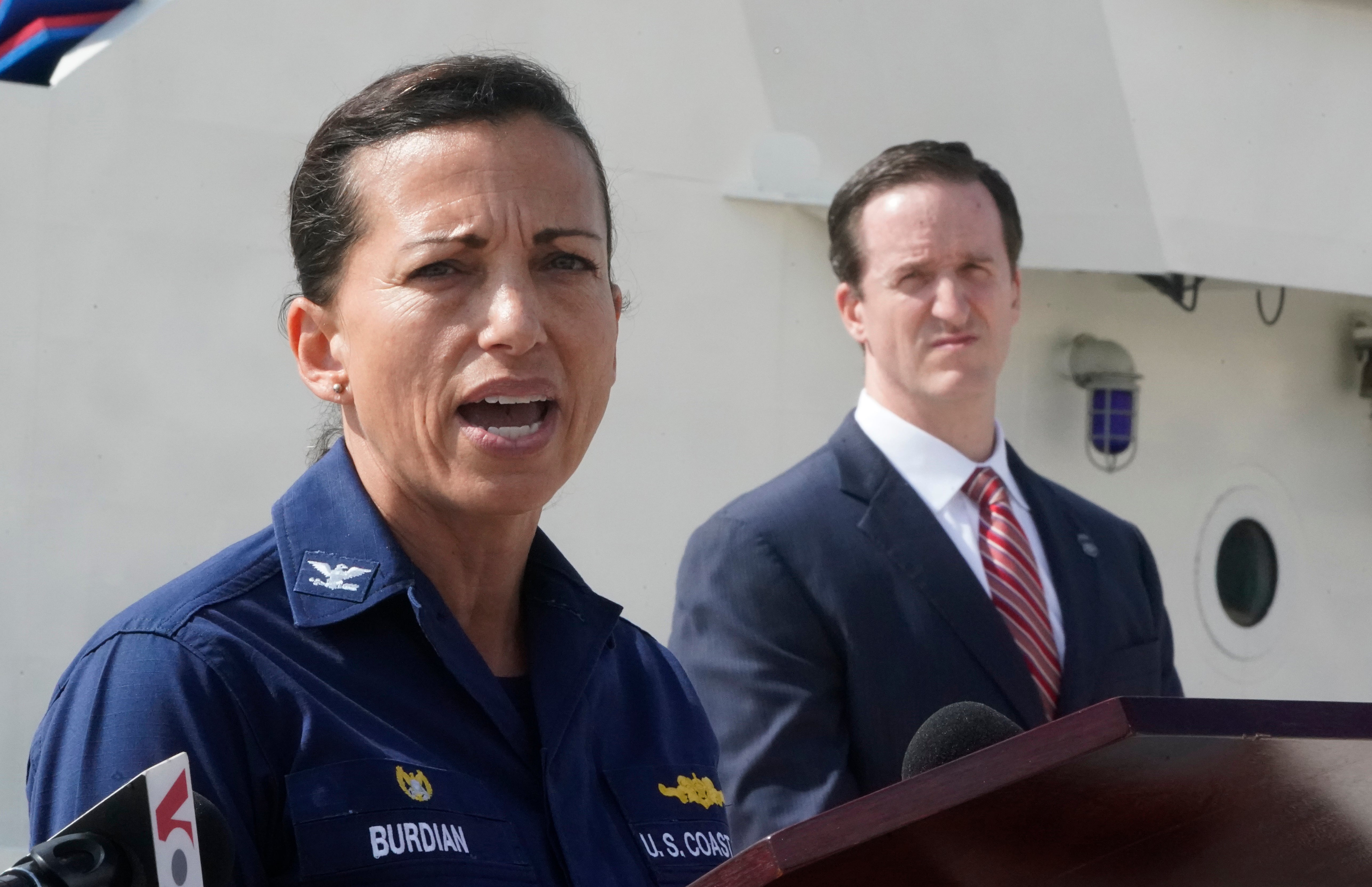EXPLAINER: Who uses Florida-Caribbean smuggling routes?
Little is known about the 40 people believed to have been aboard a boat that capsized and was found this week near the Florida coast with just one survivor

Your support helps us to tell the story
From reproductive rights to climate change to Big Tech, The Independent is on the ground when the story is developing. Whether it's investigating the financials of Elon Musk's pro-Trump PAC or producing our latest documentary, 'The A Word', which shines a light on the American women fighting for reproductive rights, we know how important it is to parse out the facts from the messaging.
At such a critical moment in US history, we need reporters on the ground. Your donation allows us to keep sending journalists to speak to both sides of the story.
The Independent is trusted by Americans across the entire political spectrum. And unlike many other quality news outlets, we choose not to lock Americans out of our reporting and analysis with paywalls. We believe quality journalism should be available to everyone, paid for by those who can afford it.
Your support makes all the difference.Little is known about the 40 people believed to have been aboard a boat that capsized and was found this week near Florida s coast with just one survivor. But they were on a route often traveled by migrants trying to enter the U.S. clandestinely, and authorities suspect the trip was organized by smugglers.
Apprehensions of migrants in the Florida-Caribbean region appear to be on pace to surpass numbers from last year, with more Cubans and Haitians taking to sea despite the dangers and stricter U.S. refugee policies.
The sole survivor told a good Samaritan and authorities that the boat capsized late Saturday after he and 39 others had set out for Florida from Bimini, a chain of islands in the Bahamas about 55 miles (88 kilometers) east of Miami.
Officials say the Bahamas is a common route for smuggling migrants. Both the Coast Guard and Homeland Security say they are treating this as a human smuggling case.
WHY THE BAHAMAS?
The Bahamas is seen as a steppingstone to reach Florida and the United States.
For the most part, the migrants are from Haiti and Cuba, but the Royal Bahamas Defense Force has reported apprehending migrants from other parts of the world, including from Colombia and Ecuador.
Refugee aid groups say some migrants opt for the longer route to avoid the increasing law enforcement along the Florida Straits. “They may island hop,” said Randy McGrorty, executive director of Catholic Legal Services.
The defense force said that last Friday it rescued 31 migrants who were on another overcrowded boat that also capsized. Those migrants had also departed from Bimini.
The Bahamas and nearby Turks and Caicos Islands have stepped up their anti-smuggling enforcement efforts in cooperation with the Coast Guard in recent years.
HOW MANY ARE MAKING THE JOURNEY?
From Oct. 1, 2020, to Sept. 30 of last year, the Coast Guard says that in the region that includes Florida and the Caribbean its crews apprehended 838 Cubans; 1,527 Haitians; and 742 Dominicans.
In less than four months since last October, crews have apprehended 686 Cubans; 802 Haitians and 685 Dominicans.
In May, a Canadian man was sentenced to two years and eight months in prison in U.S. federal court for his role in an operation that smuggled people from Sri Lanka by plane to Haiti, then by boat to the Turks and Caicos and the Bahamas to South Florida.
The total number of people making the journey is impossible to know as many try to arrive undetected and thousands have died over the years.
WHY ARE THEY COMING?
Reasons vary, with some migrants seeking better economic opportunity and some escaping political turbulence or violence.
Cuba is facing an economic crisis that has been exacerbated by the pandemic, increased U.S. sanctions and cutbacks in aid from Venezuela. The crisis has led to shortages in many goods and a series of protests that shook the island on July 11.
Legal ways to leave Cuba were strained by former President Donald Trump's near-closure of the U.S. Embassy in 2017. The United States had been providing 22,000 visas a year to Cuba for two decades until 2017. And President Joe Biden has not resumed dialogue with the communist nation.
McGrorty, of Catholic Legal Services, says his office is seeing “very meritorious asylum claims.”
In Haiti, violence has spiked since the July assassination of President Jovenel Moise. The political instability and a 7.2 magnitude earthquake in August have deepened a growing humanitarian crisis in the impoverished Caribbean nation.
CAN THEY STAY?
The U.S. Coast Guard often repatriates people found at sea; it did so earlier this month when it sent back 119 Cuban migrants.
At the beginning of 2017, President Barack Obama eliminated a policy known as “wet foot-dry foot” that allowed Cubans who reached U.S. shores to remain, usually as refugees, while those caught at sea were sent back.
Typically Cubans would obtain parole cards that allowed them to apply for residency a year afterward. But right now the system is in disarray, with lawsuits challenging how the government treats Cuban asylum seekers. A 56-year-old law has given Cubans a virtually guaranteed path to legal residency and eventual citizenship.
Thousands of Cubans are subject of deportation, but Immigration and Customs Enforcement still lists the communist nation as uncooperative or “recalcitrant” in accepting deportees.
The U.S. government has been called out for expelling thousands of Haitians. A U.N. report estimated about 9,000 Haitians were expelled between Sept. 19, 2021, and late November. Most had arrived at the U.S.-Mexico border in September.